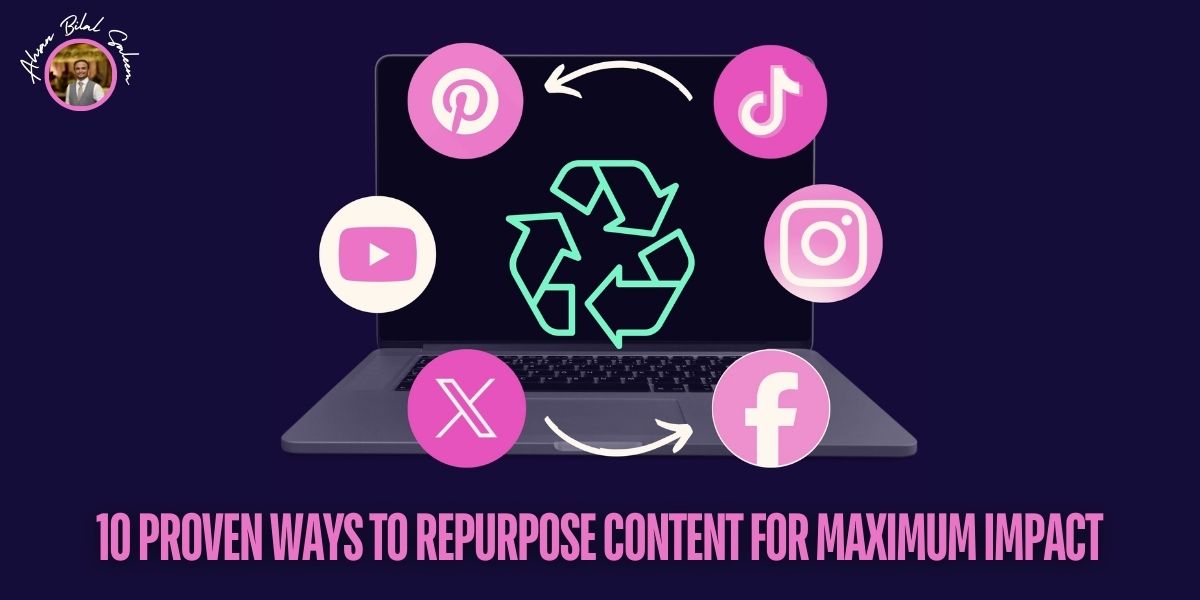10 Proven Ways To Repurpose Content For Maximum Impact
Content creation is a time-consuming process, but the good news is that you can extend the life and reach of your existing content by repurposing it. Repurpose content involves taking a piece of content and transforming it into different formats or platforms to reach a broader audience or deliver value in a new way. By doing this, you maximize the impact of each piece and save resources on creating new content from scratch.
Here are 10 proven ways to repurpose content effectively:
1. Turn Blog Posts into Infographics
Long-form blog posts filled with data, statistics, and complex concepts can be transformed into visually appealing infographics. Infographics simplify information and make it easier to digest, while also being highly shareable on social media platforms. Tools like Canva and Piktochart make it easy to design infographics that capture the essence of your blog post in a visually compelling way.
2. Create Short Social Media Posts from Articles
If you’ve written a comprehensive article, break it down into bite-sized chunks for social media. Each subheading or key takeaway can be turned into a tweet, Instagram post, or LinkedIn update. You can also create a series of posts from a single article, sharing the content over time to keep your audience engaged while maintaining consistency in your messaging.
3. Transform Blog Posts into Videos
Video marketing is booming, and many users prefer consuming information in video format. Turn a popular blog post into a video by summarizing the key points, adding visuals, and explaining the topic in front of a camera or through screen recordings. Platforms like YouTube, TikTok, and Instagram Reels are ideal for promoting these videos, which not only expand your audience reach but also boost engagement.
4. Compile Articles into an Ebook
If you have a series of blog posts centered around a specific theme, consider combining them into an ebook. For example, several posts on content marketing strategies could be turned into a comprehensive ebook on the topic. This not only provides value to your audience but can also be used as a lead magnet to encourage email sign-ups.
5. Turn Case Studies into Podcasts
Case studies are informative but can sometimes be overlooked in written form. Turning them into podcast episodes allows you to reach a different type of audience—those who prefer to listen rather than read. You can break down the case study’s key points, include interviews with people involved, and share insights that help listeners understand the subject matter more deeply.
6. Use Webinar Content to Create a Guide
If you’ve hosted a webinar on a specific topic, repurpose the transcript into a comprehensive guide. Webinars are usually filled with expert insights, which can easily be adapted into step-by-step written content that your audience can reference later. You can also take key quotes or findings from the webinar and integrate them into blog posts or social media content.
7. Transform Data from Reports into Slide Decks
If you’ve published a data-heavy report, consider creating a slide deck that highlights the most important insights. Slide decks are useful for sharing information in a concise, visually appealing format and can be posted on platforms like SlideShare or used during presentations at events, webinars, or client meetings.
8. Convert Text-Based Content into Audio Versions
In today’s fast-paced world, many people prefer consuming content on the go. Convert blog posts or articles into audio format by reading them aloud and sharing them as downloadable audio files or podcasts. This makes your content accessible to a wider audience, particularly those who listen to podcasts while commuting or exercising.
9. Create Checklists or Worksheets from Tutorials
If you’ve written a how-to guide or tutorial, distill the actionable steps into a checklist or worksheet. This gives your audience a practical tool they can use to follow along and implement your advice. Worksheets and checklists can be gated content that helps grow your email list or used as downloadable resources in blog posts.
10. Develop Email Newsletters from Existing Content
Take your top-performing blog posts and convert them into email newsletters. Summarize key points, add relevant links to the full articles, and share them with your email subscribers. This keeps your audience engaged with your content and increases the visibility of older posts that may no longer be receiving organic traffic.
Why Repurposing Content is Essential
Repurposing content is not just about saving time and resources; it’s also a way to reach a broader audience. Different people prefer consuming content in different formats—some enjoy reading, others watching, while some prefer listening. By repurposing content, you cater to all these preferences and ensure that your message is widely accessible.
Moreover, repurposing also boosts SEO. By making different bits of content from one center thought, you increment the possibilities being found across different stages and arrangements. It also helps reinforce your message, as the same content presented in multiple ways is more likely to stick with your audience.
Tips for Effective Repurposing
- Identify Evergreen Content: Focus on repurposing evergreen content that will remain relevant for a long time. This ensures your efforts pay off in the long run.
- Tailor to Each Platform: Try to change your reused content for the stage it’s expected for. A blog post turned into a tweet should be concise, while an infographic should be highly visual.
- Track Performance: Keep track of how your repurposed content performs. Use analytics to see which formats and platforms deliver the best results, allowing you to focus your efforts where they matter most.
Conclusion
Repurpose content allows you to maximize the value of every piece of content you create. By applying these 10 proven methods, you can extend your content’s reach, engage different types of audiences, and save valuable time and resources. Whether it’s transforming blog posts into videos or creating infographics from data reports, repurposing content helps you achieve greater impact and enhance your content marketing strategy.










